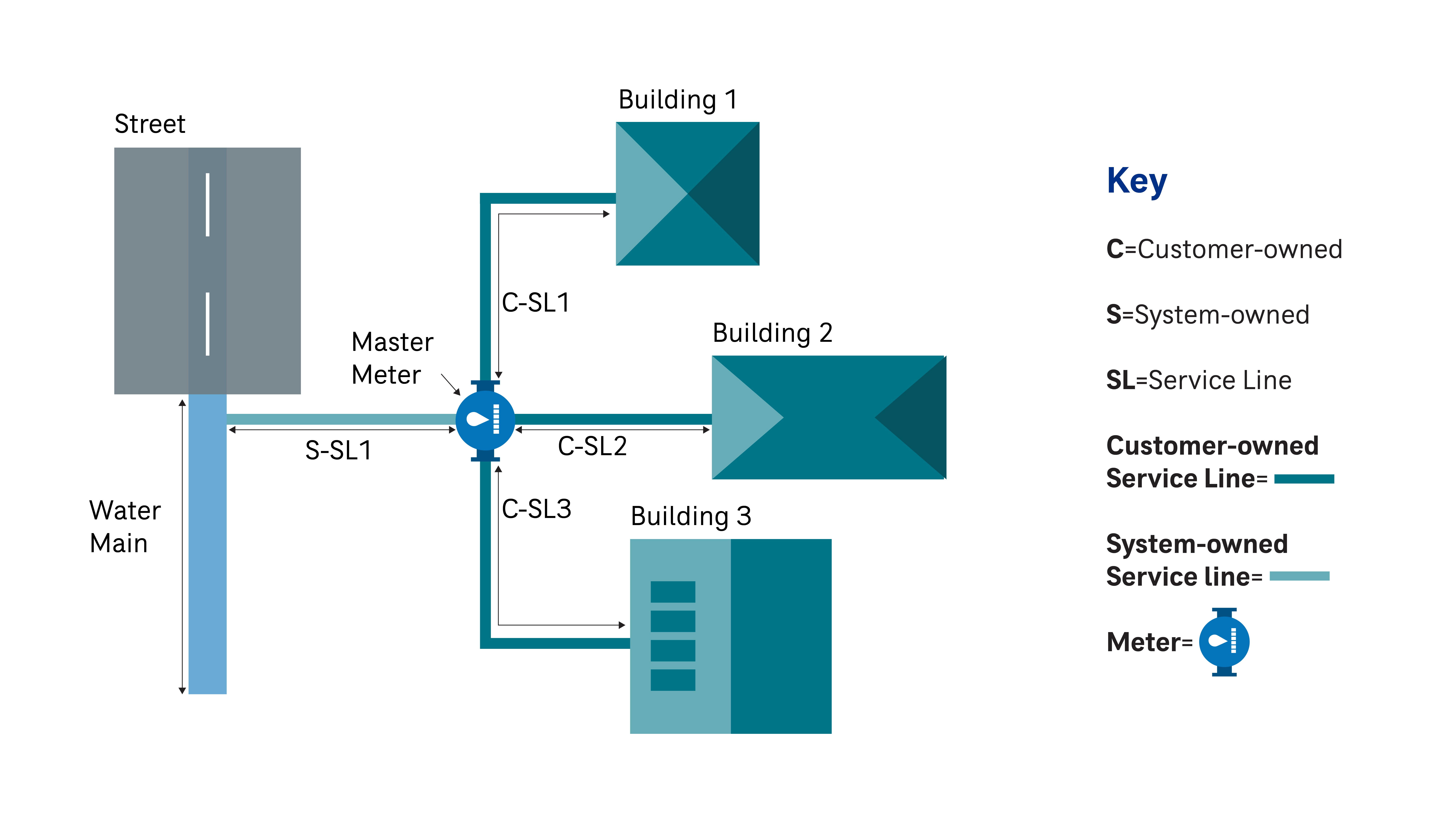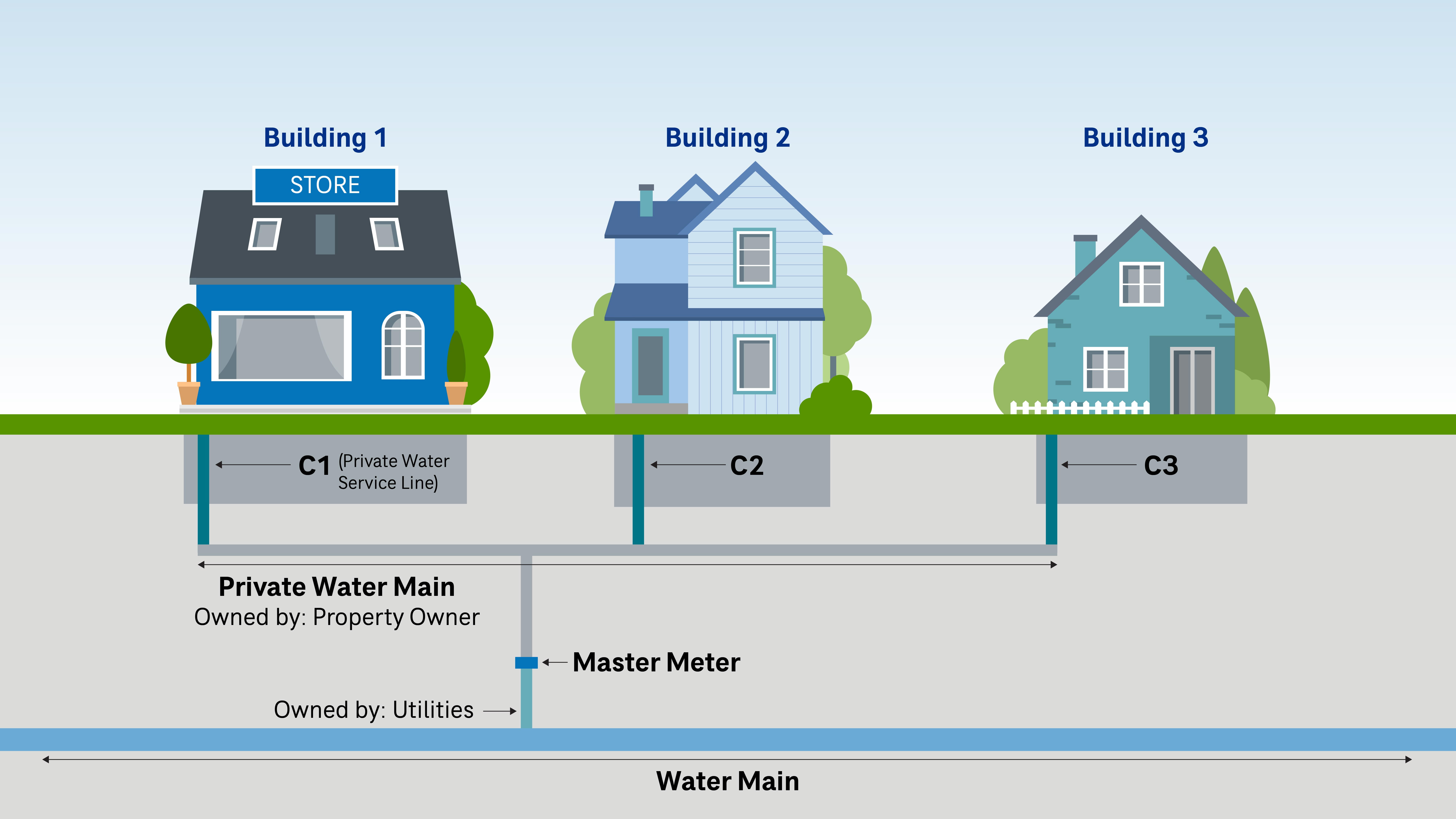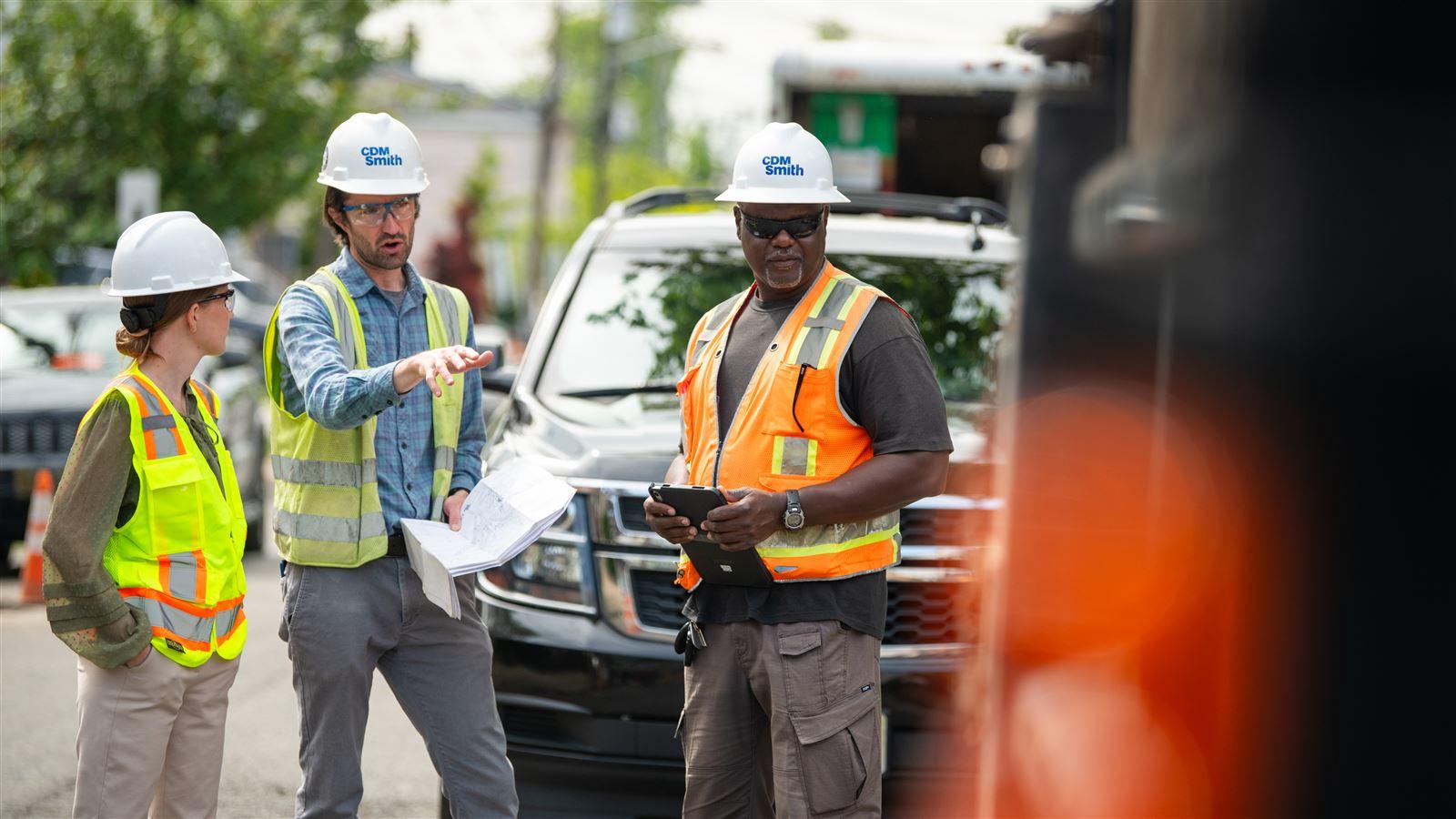How should utilities manage service lines downstream of master meters?
The Environmental Protection Agency’s (EPA) Lead and Copper Rule Improvements (LCRI) require utilities to identify all water service line materials, including those downstream of master meters. A master meter is a single water meter that provides service to multiple buildings or units on a shared property. They are common in apartment buildings, mobile home parks, college campuses, gated communities, and commercial developments. Once water passes through the master meter, it travels through privately owned mains and service lines to reach individual buildings or units. In many cases, utilities have no visibility or control over the mains and service lines beyond the meter.
To comply with evolving Lead and Copper Rule regulations, how can utilities begin to identify service line materials downstream of master meters where record information is unknown? These situations typically fall outside of the traditional utility ownership and control, but they are still the water system’s responsibility for listing in the inventory. 
The figure above outlines the EPA’s interpretation of one type of master meter configuration and the pipe sections to be included in an inventory. The EPA’s Inventory June 2023 Guide states that a community water system inventory must include “all service lines connecting the water main to the interior plumbing in a building, regardless of the actual or intended use." These include, for example, service lines connecting multiple units or buildings on a property.
In addition to including in the inventory, the EPA’s LCRI states that all Community Water Systems (CWSs) and Non-Transient Non-Community Water Systems (NTNCWSs) must make a “reasonable effort” to replace any lead or galvanized requiring replacement (GRR) service lines, even if they are beyond a master meter.
what do master meter scenarios look like?
One-to-many service line configuration
A utility-owned service line feeds through a master meter and then branches into multiple privately owned service lines to individual homes or units. This configuration is common in trailer parks or garden apartment complexes.
Responsibility: The utility must inventory and eventually replace (if needed) each service line to every building.
Private community distribution system
A master meter feeds a privately owned water main that serves multiple buildings with private service lines connecting from that main to each building. The entire internal network is privately owned. This configuration is common in campus-style developments.
Responsibility: The LCRI and the guidance documents do not indicate that a water main must be owned by the water system, but the utility still has to inventory the service lines up to each building inlet. The EPA states that the pipe connecting the water main to the building must be inventoried no matter how the ownership is divided. In the above graphic, this would be C1, C2 and C3.
best practices for identification
1. Identify potential master meter properties
Use GIS data, meter sizes, and land-use records to flag properties likely served by master meters. Look for meters larger than 2", properties with multiple structures or shared ownership, and private communities without PWSIDs.
2. Clarify ownership and PWSID designation
Determine if the development operates as a separate water system. If it has its own PWSID, it’s responsible for its own inventory. If not, the primary utility must include those service lines even if they’re fully on private property.
3. Reach out to property owners and managers
Send requests asking for construction dates of buildings and water infrastructure, service line material documentation, maps of internal plumbing networks, and confirmation of who owns what segments of pipe. Use at least two methods of contact (example: letter and phone call) and make four total communication attempts. EPA considers this to be “reasonable effort."
4. Offer to inspect
Offer to conduct on-site inspections to confirm service line materials. A single visit can potentially resolve the status of dozens of unknown service lines.
5. Use aerial images and permits as supplemental evidence
If property access is denied or not feasible, use aerial maps to count structures and predict service lines. Utilities can also use building permit dates and utility records to estimate materials.
6. Update your inventory with likely material assumptions
If you can’t obtain any information, assume there is one service line per building or unit. Use construction dates to assign likely materials of pipe (example: pre-state or local lead ban is potentially lead), and mark lines as unknown if verification isn't possible.
7. Notify customers of unknown materials
Water systems must notify customers of unknown service line materials every year until they’re replaced. For master meter properties, this could mean sending notices to the individual tenants, as well as the property manager or owner.
8. Plan for replacements even without ownership
Lead and GRR lines need to be replaced, regardless of ownership. If the utility can’t gain access, document outreach efforts, keep the line on your replacement list, and note the property as pending access (rather than removing it). Note that a water system is not required to pay for the replacement of a private lead service line.

To ensure community health, the responsibility for safe water remains, even beyond the master meter.

Proactively identifying and documenting materials on the private side is essential for compliance and public health.







